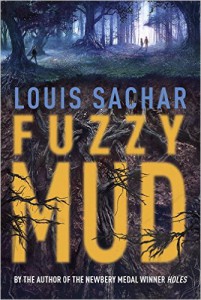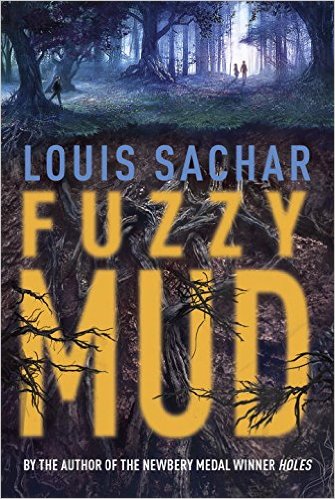“A little mud never hurt anyone” turns out to be a HUGE understatement in Heath Cliff, Pennsylvania, when fifth grader Tamaya Dhiwaddi defends her friend, seventh grader Marshall Walsh, by throwing a handful of fuzzy mud at Chad Hilligas, a bully at Woodridge Academy.
The “fuzzy mud” is a genetically altered slime mold grown by SunRay Farms to produce a gas alternative that will address the energy c risis in an over-populated world. What was created to save mankind was never intended to destroy it. Yet, Jonathan Fitzman’s ergonyms—“single-celled, high-energy organisms” (29), the main ingredient in Biolene—might mutate and spiral out of control to do just that!
risis in an over-populated world. What was created to save mankind was never intended to destroy it. Yet, Jonathan Fitzman’s ergonyms—“single-celled, high-energy organisms” (29), the main ingredient in Biolene—might mutate and spiral out of control to do just that!
The “frankengerms,” as they come to be called, provide the central conflict in Louis Sachar’s plot-driven novel, Fuzzy Mud. While supplying interesting math and science facts, the book invites readers to consider the power of exponential growth as well as the consequences of overpopulation. It also asks important ecological questions, like: Do we “risk worldwide catastrophe or give up on a source of clean, affordable energy” (180)? Although this is a Hobson’s choice—where neither alternative is a good one–, Sachar’s mystery-thriller forces us to take notice. He also insinuates that virtue and valor may not be enough to save the world, but they are a start.
Minor themes in the book are friendship and the behavioral consequences of low self-esteem. Even though Marshall is Tamaya’s guide and protector in some respects, he is also a “thumb-sucking coward” in others. His shame, self-pity, and self-hatred paralyze him as much as no one’s noticing or caring about Chad contribute to his becoming a bully. This thin little book grows fat with its layers of meaning and its multiple messages, not the least of which is that self-perception often determines behavior. After all, we are the authors of our own life stories.
- Posted by Donna

